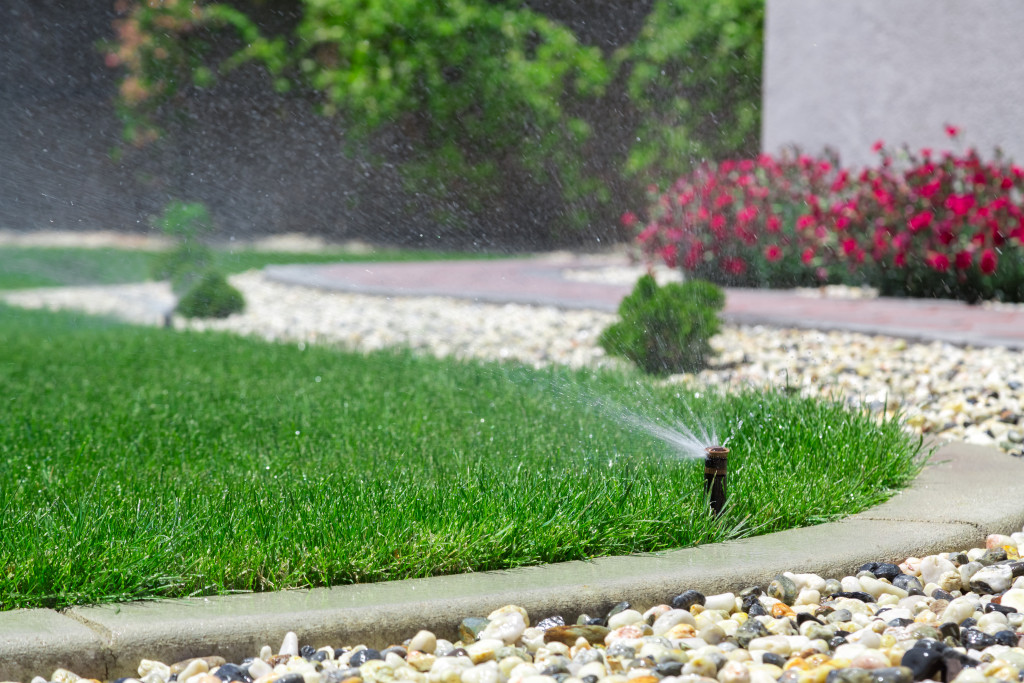Every homeowner wants to have a healthy and beautiful lawn to complete their property’s amazing curb appeal. But apart from planting the prettiest flowering plants in your yard, producing greener grass can make all the difference. The catch is, achieving lush green lawn grass requires a bit more work, which can be frustrating at the start.
Lawn experts reveal that making your lawn grass greener can be achieved with several lesser-known tricks and basic care practices too. Whether you’re planning to do it on your own or using some lawn maintenance services, these tips would be helpful for you. Continue reading to know how you can achieve greener lawn grass.
-
Feed your lawn
Fertilization is one of the most important elements for keeping a lawn fresh and green. In general, fertilizers contain the top nutrients a lawn needs: potassium, nitrogen, and phosphorus. These nutrients can help your grass grow lusher, thicker, and greener.
The good news is, fertilizing is not a complex task, meaning you can do it without the help of professional landscapers. On top of that, it’s not expensive to fertilize a lawn. A spreader and the fertilizer itself are the only ones you need to invest in. And if you’re looking to grow your lawn fast, feeding it with fertilizer is the key.
-
Mow it properly
Another vital element of achieving a greener lawn is mowing it properly. While this might seem like a simple task, the way you mow your lawn can make a huge difference. For one, mowing it too short can result in great stress for the grass. There’s a possibility that it will turn yellow as it can be hard for the grass to recover from a drastic cut.
You will need to consider the type of grass on your lawn to determine the ideal cut height. For instance, Bermudagrass requires 0.5 to 2.5 inches, and tall fescue needs about 1.5 to 5 inches. Also, do not use dull blades when mowing your lawn as it can stress out the grass. Always aim for a nice and clean cut by mowing with a sharp blade. Lastly, you can prevent weeds from thriving by not scalping your lawn’s edges, particularly around the driveway and walkways.

-
Aerate your lawn
Despite being the key to keeping a healthy, green lawn, people often neglect the importance of aeration. This process helps make your grass greener by digging holes for breathing, which means more nutrients, water, and oxygen can penetrate deep down the soil. Many lawn care experts offer aeration services to help homeowners like you have a healthier lawn.
Find professionals that use high-standard aeration equipment to ensure the effectiveness of the treatment. Some of the benefits of considering this process are stronger turfgrass roots, enhanced soil water uptake, improved cushioning and resiliency, and reduced soil compaction. For heavily used lawns, aeration should be done twice a year. If your lawn is barely walked on, you can benefit from an annual treatment.
-
Deal with pests
Pest invasion can cause your turf to turn sick and lose its appeal. If you want to achieve a greener and healthier lawn, you need to control the lawn pests on your property. Look for bite marks on grass, wilting blades, dying or dead grass patches, and brown spots. These are obvious signs that pests are lurking on your lawn. Call on a local lawn pest control team to deal with them. Choose the professionals who use natural pesticides or organic treatments to avoid further health hazards for you and your family.
-
Water the right way
As you might’ve already known, water is necessary for keeping a lush lawn. While watering the lawn seems to be a basic task, many homeowners often forget to do it. Some forget to regularly water their lawn when they go on vacation, while others get too busy to do so. Particularly during warmer months, your lawn needs about up to two inches of water every week.
It’s up to you if you want to invest in an irrigation system. While this might come with an upfront cost, it can save you more money in the long due to its efficiency. Underwatering your lawn can make it vulnerable to diseases and weeds, affecting its lush green.
These tasks may require a lot of effort and time to learn, but the results can be fantastic. If you’re noticing the grass on your lawn looks discolored or dull, performing such lawn maintenance and care practices can help you big time. Give life to those shades of pale green by using this guide today.

